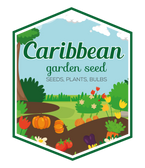
Brunswick Cabbage - Brassica oleracea, Hardy Heirloom. vegetable
- Get free shipping to lower 48 states on orders $54.95+ (Most Items), excluding live plants, plant bulbs, and black plastic nursery crate.
- Most orders are processed by the next day !
- Safe Seed Pledge
- Select your desired size and/or color from the available options.
- Blue-green flat heads
- White interior
- Heads weigh 6-9 pounds
- Excellent for late fall or winter use
- 90 days from transplant
- ±9,000 seeds/oz
90 Days. A large drumhead cabbage that is very cold hardy. A fall/winter type cabbage, it stores very well.
100 seeds per packet, Seeds Per Oz: 9000
Sowing: Start your Brunswick cabbage seeds inside 8-12 weeks before the last spring frost, planting them in rich soil 1/2 inch deep and 2 inches apart. Because the first crop of cabbage should mature before the heat of summer, plant your seedlings about 4 weeks before the last expected frost; set them 12-18" apart in rows 3-4' apart, burying the stems about halfway up. For a fall crop, direct sow or transplant seedlings in midsummer. For companion planting benefits, plant cabbage with aromatic herbs or potatoes; avoid planting them with tomatoes or pole beans. Herbs such as thyme, peppermint, sage, and rosemary will repel the destructive white cabbage moth.
Growing: If hard frosts come, cover the young plants. Mulch around them to regulate soil temperature and control weeds, and keep the soil moisture even to prevent the cabbages from splitting. If a sudden excess of moisture occurs, grasp the plant and turn it 90 degrees clockwise; this severs enough of the roots to slow down growth and prevent splitting.
Harvesting: Harvest the cabbages as soon as feel firm and reach a good size. Small cabbages tend to be more tender, while large cabbages from fall growth keep well over the winter.
LET OUR CUSTOMER SPEAK FOR US

![[Seeds] - Caribbeangardenseed](http://caribbeangardenseed.com/cdn/shop/files/gift-card-gift-card-1_1024x1024_dfa857db-9150-4315-a362-7f0bb3fb9c47_60x28.png?v=1722895789)







